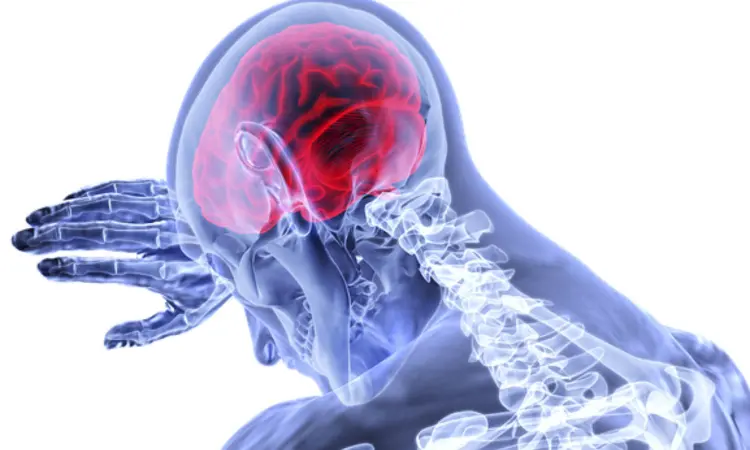- Home
- Medical news & Guidelines
- Anesthesiology
- Cardiology and CTVS
- Critical Care
- Dentistry
- Dermatology
- Diabetes and Endocrinology
- ENT
- Gastroenterology
- Medicine
- Nephrology
- Neurology
- Obstretics-Gynaecology
- Oncology
- Ophthalmology
- Orthopaedics
- Pediatrics-Neonatology
- Psychiatry
- Pulmonology
- Radiology
- Surgery
- Urology
- Laboratory Medicine
- Diet
- Nursing
- Paramedical
- Physiotherapy
- Health news
- Fact Check
- Bone Health Fact Check
- Brain Health Fact Check
- Cancer Related Fact Check
- Child Care Fact Check
- Dental and oral health fact check
- Diabetes and metabolic health fact check
- Diet and Nutrition Fact Check
- Eye and ENT Care Fact Check
- Fitness fact check
- Gut health fact check
- Heart health fact check
- Kidney health fact check
- Medical education fact check
- Men's health fact check
- Respiratory fact check
- Skin and hair care fact check
- Vaccine and Immunization fact check
- Women's health fact check
- AYUSH
- State News
- Andaman and Nicobar Islands
- Andhra Pradesh
- Arunachal Pradesh
- Assam
- Bihar
- Chandigarh
- Chattisgarh
- Dadra and Nagar Haveli
- Daman and Diu
- Delhi
- Goa
- Gujarat
- Haryana
- Himachal Pradesh
- Jammu & Kashmir
- Jharkhand
- Karnataka
- Kerala
- Ladakh
- Lakshadweep
- Madhya Pradesh
- Maharashtra
- Manipur
- Meghalaya
- Mizoram
- Nagaland
- Odisha
- Puducherry
- Punjab
- Rajasthan
- Sikkim
- Tamil Nadu
- Telangana
- Tripura
- Uttar Pradesh
- Uttrakhand
- West Bengal
- Medical Education
- Industry
MRI most cost-effective for stroke detection in patients presenting to ED with dizziness

USA: A recent study published in the American Journal of Roentgenology suggests MRI as the most cost-effective imaging modality for evaluating patients presenting to the emergency department (ED) with dizziness when considering downstream costs.
According to the authors, the results could improve patient care by catching underlying strokes.
"The use of MRI in patients presenting to the ED with dizziness improves detection of stroke and selection for subsequent preventive measures. MRI-based evaluation results in higher cumulative quality-adjusted life year (QALYs) and lower long-term costs," the researchers wrote.
In patients presenting with dizziness, underlying stroke is often misdiagnosed. Such patients are usually ineligible for treatment of acute stroke but accurate diagnosis may still improve outcomes through patient selection for secondary prevention measures. Long H. Tu, Yale School of Medicine, New Haven, CT, and colleagues aimed to investigate the cost-effectiveness of differing neuroimaging approaches in evaluating patients presenting to the ED with dizziness who are not candidates for acute intervention.
For this purpose, the researchers constructed a Markov decision-analytic model from a healthcare system perspective for evaluating a patient presenting to the ED with dizziness. A comparison was made between the four diagnostic strategies: head and neck CTA, non-contrast CT head, specialized MRI (including multiplanar high-resolution DWI), and conventional brain MRI. They compared differing long-term costs and outcomes related to stroke detection and secondary prevention. Cost-effectiveness was calculated in terms of lifetime expenditures in 2022 U.S. dollars for each QALY: deterministic and probabilistic sensitivity analyses were performed.
Based on the study, the researchers reported the following findings:
- Specialized MRI resulted in the highest QALYs and was the most cost-effective strategy with $13,477 greater cost and 0.48 greater QALYs compared to non-contrast head CT.
- Conventional MRI had the next-highest health benefit, although was dominated by extension with an incremental cost of $6756 and 0.25 QALYs; CTA was also dominated by extension, with an incremental cost of $3952 for 0.13 QALY.
- Non-contrast CT alone had the lowest utility among imaging choices.
- In the deterministic sensitivity analyses, specialized MRI remained the most cost-effective strategy.
- Conventional MRI was more cost-effective than CTA across a wide range of model parameters, with incremental cost-effectiveness remaining less than $30,000/QALY.
- Probabilistic sensitivity analysis yielded similar results as found in the base-case analysis, with specialized MRI being more cost-effective than conventional MRI, which in turn was more cost-effective than CTA.
"MRI, incorporating specialized protocols when available, is the preferred approach for evaluating patients presenting to the ED with dizziness, establishing a stroke diagnosis and selecting patients for secondary prevention measures," the researchers concluded.
Reference:
Tu LH, Melnick E, Venkatesh AK, Sheth KN, Navaratnam D, Yaesoubi R, Forman HP, Mahajan A. Cost-Effectiveness of CT, CTA, MRI, and Specialized MRI for Evaluation of Patients Presenting to the Emergency Department With Dizziness. AJR Am J Roentgenol. 2023 Nov 8. doi: 10.2214/AJR.23.30060. Epub ahead of print. PMID: 37937837.
Dr Kamal Kant Kohli-MBBS, DTCD- a chest specialist with more than 30 years of practice and a flair for writing clinical articles, Dr Kamal Kant Kohli joined Medical Dialogues as a Chief Editor of Medical News. Besides writing articles, as an editor, he proofreads and verifies all the medical content published on Medical Dialogues including those coming from journals, studies,medical conferences,guidelines etc. Email: drkohli@medicaldialogues.in. Contact no. 011-43720751


